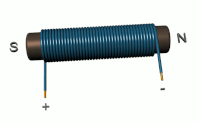
Finite element modelling of fracture propagation in saturated media using quasi-zero-thickness interface elements
Sign Up to like & getrecommendations! Published in 2017 at "Computers and Geotechnics"
DOI: 10.1016/j.compgeo.2017.10.016
Abstract: Abstract A new computational technique for the simulation of 2D and 3D fracture propagation processes in saturated porous media is presented. A non-local damage model is conveniently used in conjunction with interface elements to predict… read more here.
Keywords: finite element; interface elements; fracture propagation; element modelling ... See more keywords

Finite element modelling of flexural behaviour of geosynthetic cementitious composite mat (GCCM)
Sign Up to like & getrecommendations! Published in 2018 at "Composites Part B: Engineering"
DOI: 10.1016/j.compositesb.2018.07.052
Abstract: Abstract This paper presents a finite element modelling of a new geosynthetic cementitious composite material called GCCM. The framework adopted a concept of concrete externally bonded by fibre-reinforced polymer (FRP). The existing bond-slip model was… read more here.
Keywords: finite element; gccm; geosynthetic cementitious; flexural behaviour ... See more keywords

The influence of shortening and sedimentation on rejuvenation of salt diapirs: A new Discrete-Element Modelling approach
Sign Up to like & getrecommendations! Published in 2017 at "Journal of Structural Geology"
DOI: 10.1016/j.jsg.2017.09.016
Abstract: Abstract This study employs a novel Discrete-Element Modelling approach to investigate the interplay of sedimentation with rejuvenation of diapirs by shortening. The inherent complexity of salt tectonics, the complications encountered when imaging structures beneath salt,… read more here.
Keywords: element modelling; salt; modelling approach; sedimentation ... See more keywords

Characterization and 3D finite element modelling of TRIP effect in a medium manganese steel with nano-precipitates
Sign Up to like & getrecommendations! Published in 2021 at "Materials Characterization"
DOI: 10.1016/j.matchar.2020.110845
Abstract: Abstract An ultra-low carbon Cu-rich medium manganese steel has been investigated through intercritical annealing and subsequent quasi-austempering to evade grain boundary embrittlement and enhance the resistance against cracking. The normal tempering treatment after intercritical annealing… read more here.
Keywords: finite element; element modelling; manganese steel; trip effect ... See more keywords

Implementation of different 2D finite element modelling approaches in axial flux permanent magnet disc machines
Sign Up to like & getrecommendations! Published in 2017 at "Iet Electric Power Applications"
DOI: 10.1049/iet-epa.2017.0434
Abstract: Three-dimensional (3D) finite element (FE) modelling of axial flux permanent magnet (AFPM) motors is one of the time-consuming tasks which must be completed before manufacturing the prototype motor. A simple, fast, accurate, and effective numerical… read more here.
Keywords: finite element; element modelling; permanent magnet; axial flux ... See more keywords

Finite-element EM modelling on hexahedral grids with an FD solver as a pre-conditioner
Sign Up to like & getrecommendations! Published in 2020 at "Geophysical Journal International"
DOI: 10.1093/gji/ggaa341
Abstract: S U M M A R Y The finite-element (FE) method is one of the most powerful numerical techniques for modelling 3-D electromagnetic fields. At the same time, there still exists the problem of efficient… read more here.
Keywords: topography; finite element; element modelling; modelling hexahedral ... See more keywords

Applied Element Modelling of Warping Effects in Thin-Walled C-Shaped Steel Sections
Sign Up to like & getrecommendations! Published in 2021 at "Buildings"
DOI: 10.3390/buildings11080328
Abstract: The Applied Element Method (AEM) is a relatively recent numerical technique, originally conceived for simulating the large displacement nonlinear response of reinforced concrete, masonry and steel structures, and successful applications have been presented by various… read more here.
Keywords: walled shaped; element modelling; applied element; thin walled ... See more keywords